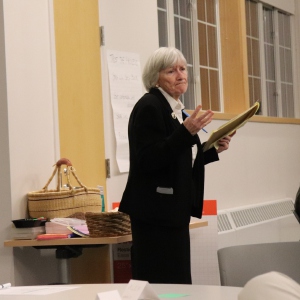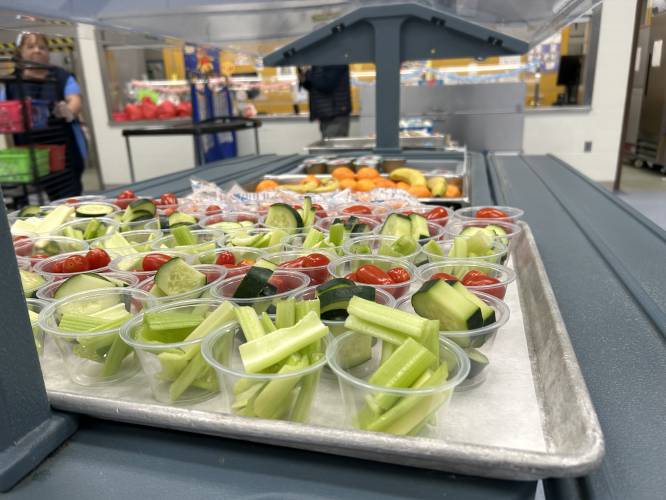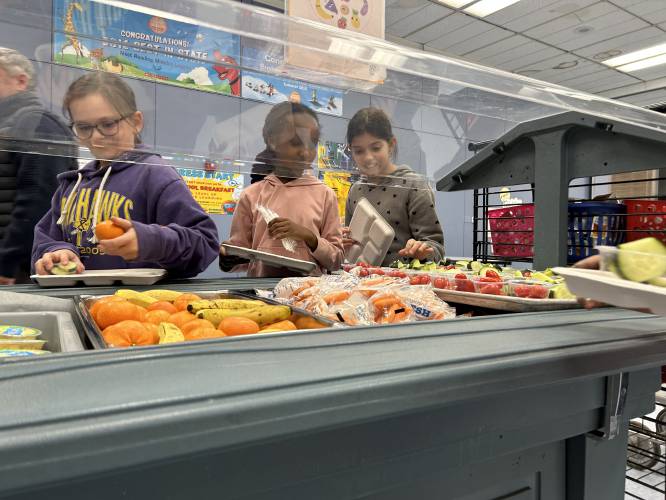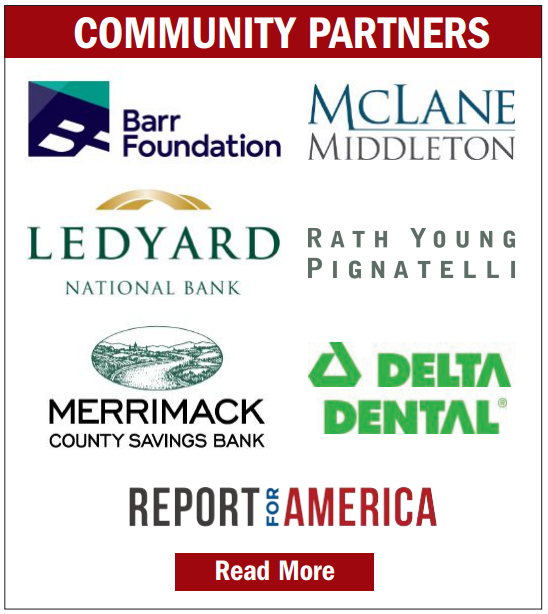Local schools join challenge to increase free breakfast participation
| Published: 04-11-2025 11:21 AM |
When students at Franklin High School began showing up to the nurse’s office hungry after not having eaten in the mornings, Brenda Petelle knew something needed to be done.
All three schools in the district already had an established breakfast program funded through federal reimbursements, student meal fees and the school budget. The challenge facing Petelle, Franklin’s food services director, was to increase participation in these free breakfast programs.
Like Donna Reynolds, her counterpart in Concord, Petelle knew the statistics: Research out of University of California Davis has shown that the availability of school breakfast improves student achievement in math and reading. In states that required schools to provide breakfast, students ended up drinking less soda and increased their consumption of fruit and milk. Overall student nutrition also improved.
For both Petelle and Reynolds, the School Breakfast Challenge came at the right time.
“We really don't do enough for marketing of our program,” Reynolds said. “Nobody has the time to put into that, unfortunately. We really fall short on it. So anytime we get an opportunity like this, it’s fantastic just to build awareness and try to entice more kids to eat school breakfast.”
The challenge, led by New Hampshire Hunger Solutions, gives school districts marketing tools that encourage students to eat breakfast at school, such as signage and trinkets to distribute as incentives. Last year, eight schools participated; this year, the challenge has grown to encompass 46 schools.
In September, Reynolds signed on at the lowest tier of the challenge, which typically involves putting up posters and making regular announcements about school breakfasts.
With help from Laura Milliken, executive director of NH Hunger Solutions, the city of Concord has also begun to ensure that all families eligible for Supplemental Nutrition Assistance Program benefits are enrolled in the food assistance program. Milliken said this method has been an underutilized route for increasing participation in the school breakfast program.
Article continues after...
Yesterday's Most Read Articles
 Concord superintendent joins over 100 school leaders in signing controversial DEI certification, but says equity work will continue
Concord superintendent joins over 100 school leaders in signing controversial DEI certification, but says equity work will continue
 Another lawsuit delays Steeplegate Mall demolition
Another lawsuit delays Steeplegate Mall demolition
 Propane tanker truck rolls over on I-93, holds up traffic
Propane tanker truck rolls over on I-93, holds up traffic
 Federal judge finds Bow School District’s actions ‘entirely reasonable’ in transgender athlete protest by parents
Federal judge finds Bow School District’s actions ‘entirely reasonable’ in transgender athlete protest by parents
 Transitional housing at risk after New Hampshire lawmakers vote to sell state-owned building
Transitional housing at risk after New Hampshire lawmakers vote to sell state-owned building
 New Hampshire set to ‘welcome home’ veterans with new 15-acre campus in Franklin
New Hampshire set to ‘welcome home’ veterans with new 15-acre campus in Franklin
“If you live in a household where one person gets SNAP and there’s a child, that child can be automatically enrolled into free and reduced meals at 200% of the federal poverty level rather than the 130% federal poverty threshold for free-reduced meal applications,” she explained. “So, from 130% to 200%, you’re getting that gap in free meals directly certified through a different system.”
All students who receive free or reduced-price lunch also receive school breakfasts at no charge.
As Hunger Solutions continues working toward closing the SNAP eligibility gap in Concord, the challenge has continued expanding its reach with a new “breakfast after the bell” program at Broken Ground School. Principal Kyle Repucci said the initiative, which makes grab-and-go breakfasts available for pick-up in the school cafeteria from 9 to 10 a.m., was a no-brainer.
“Research says kids won’t learn if they have empty bellies, so when it got pitched to me and it was easy to implement, I went to the teachers. I felt like the teachers should have a voice in it, and it was a resounding ‘yes’ from the staff,” Repucci said.
Just under 300 students attend Broken Ground. Repucci estimates up to 40 currently eat breakfast at school.
Rionna Corr, deputy director of NH Hunger Solutions, oversees the nonprofit’s effort to increase participation in school breakfast programs. In New Hampshire, participation is low compared to other places in the country.
According to Hunger Solutions, the state ranks 47th in school breakfast participation, a statistic that reflects the fraction of children who do eat breakfast at school out of the total number of children eligible to receive free breakfast through the free and reduced lunch program. A recent $225,000 donation from Hannaford supermarkets promises to boost the reach and effectiveness of Corr’s work.
At Franklin High School, one of the most recent schools to join the breakfast challenge, Petelle said participation has soared since Corr and Milliken visited with them bulletin boards, key chains, bracelets, magnets, stickers and fun pens.
Corr said each school presents a unique set of circumstances. At the high school level, “The stigma is very different. It’s very real and raw. It’s not in the lunch line. They actually just refuse to go into the lunch line, because if you’re not holding your swipe card or cash in your hand then your friends know that you’re free and reduced. So, we see kids most likely going to the nurse to grab whatever’s there as a snack, not eating breakfast, not eating lunch.”
So far, the initiative has worked.
Over the course of one week in mid-February, before Hunger Solutions’ visit to Franklin High School, 165 students ate breakfast at school. After their visit, during a recent week in March, that number had jumped to 242 students.
“Truthfully, we never turn a kid away who needs breakfast,” Petelle said. “Now we can just focus on increasing participation and educating on how important breakfast is.”
Rebeca Pereira can be reached at rpereira@cmonitor.com










 Hospitals sue state over NH’s Medicaid tax
Hospitals sue state over NH’s Medicaid tax Federal officials to review Bow parents’ free speech lawsuit regarding transgender athletes
Federal officials to review Bow parents’ free speech lawsuit regarding transgender athletes  Flooding from collapsed beaver dam shuts portion of Elm Street in Concord
Flooding from collapsed beaver dam shuts portion of Elm Street in Concord Bassett to retire from New Hampshire Supreme Court
Bassett to retire from New Hampshire Supreme Court
